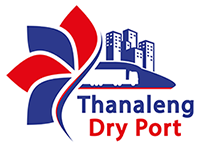
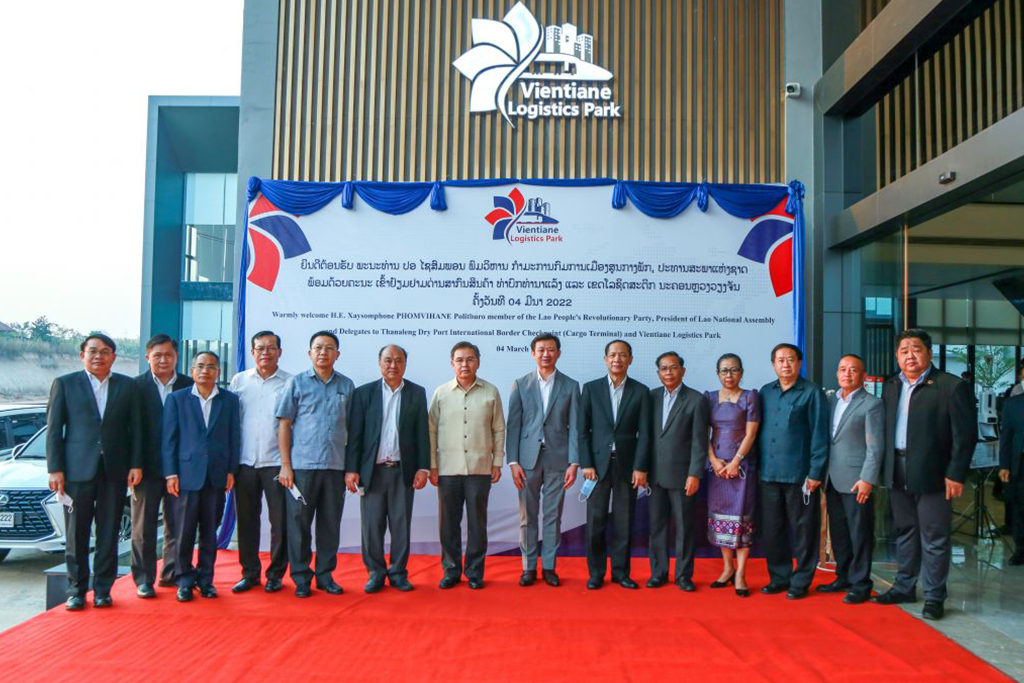
Lao logistics link a game changer for Lao economic development
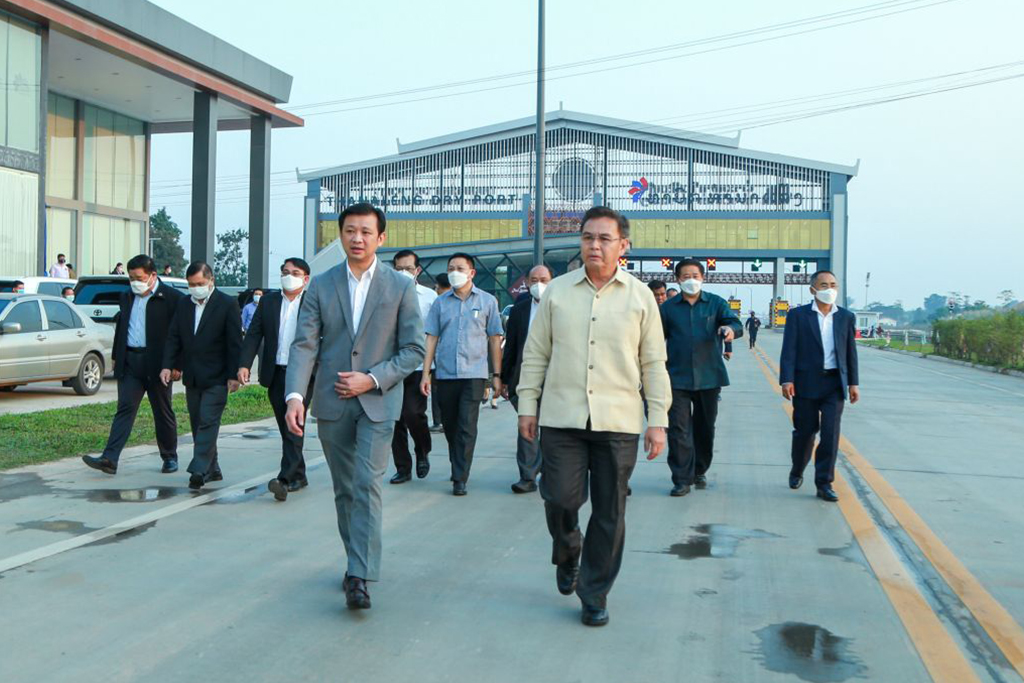
The Lao Logistics Link (LLL), which comprises the Thanaleng Dry Port (TDP) and Vientiane Logistics Park (VLP) and its other projects, will swell Laos’ gross domestic product (GDP) currently valued at 180,243 billion kip by 20 percent, the project investor told a top legislator on Friday.
President of the National Assembly (NA), Dr Xaysomphone Phomvihane, and his entourage were briefed about the project during a working tour of the dry port and logistics park in Vientiane.
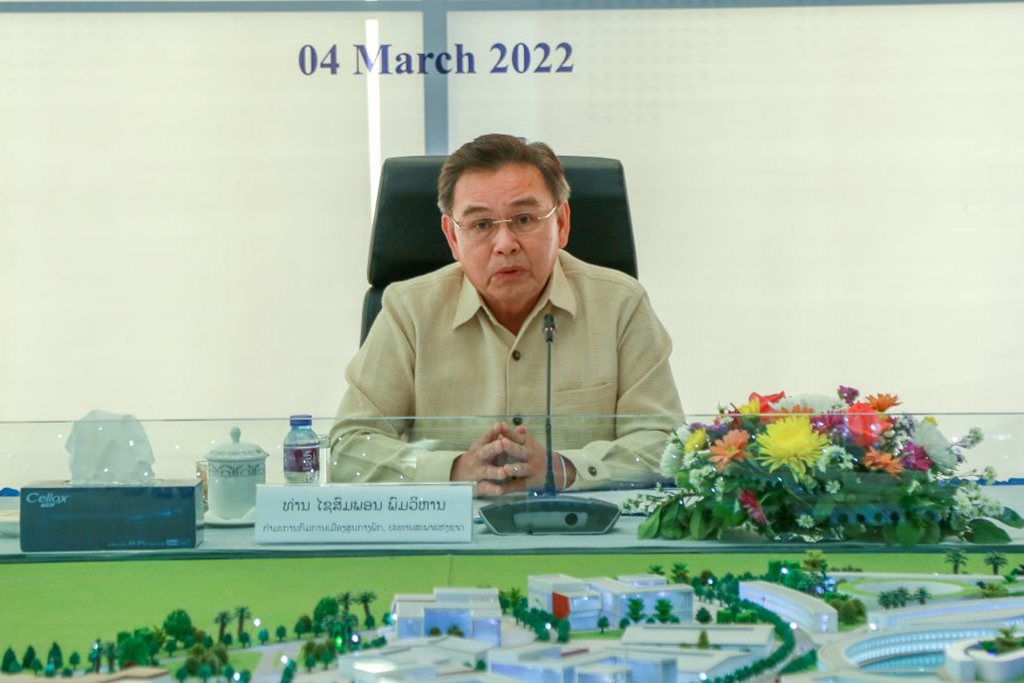
Chairman of Vientiane Logistics Park Co., Ltd., Mr Chanthone Sitthixay, told the guests that back in 2016 he proposed to develop the LLL in response to a question raised by then Prime Minister Thongloun Sisoulith (currently president), as a way to diversify the economy in an attempt to lessen Laos’ heavy reliance on natural resource exploitation.
Strategically centrally located within the region, landlocked Laos could transform itself into a regional transit hub that provides access to global markets overland and via rail, sea and air routes, Mr Chanthone recalled his response to former PM Thongloun.
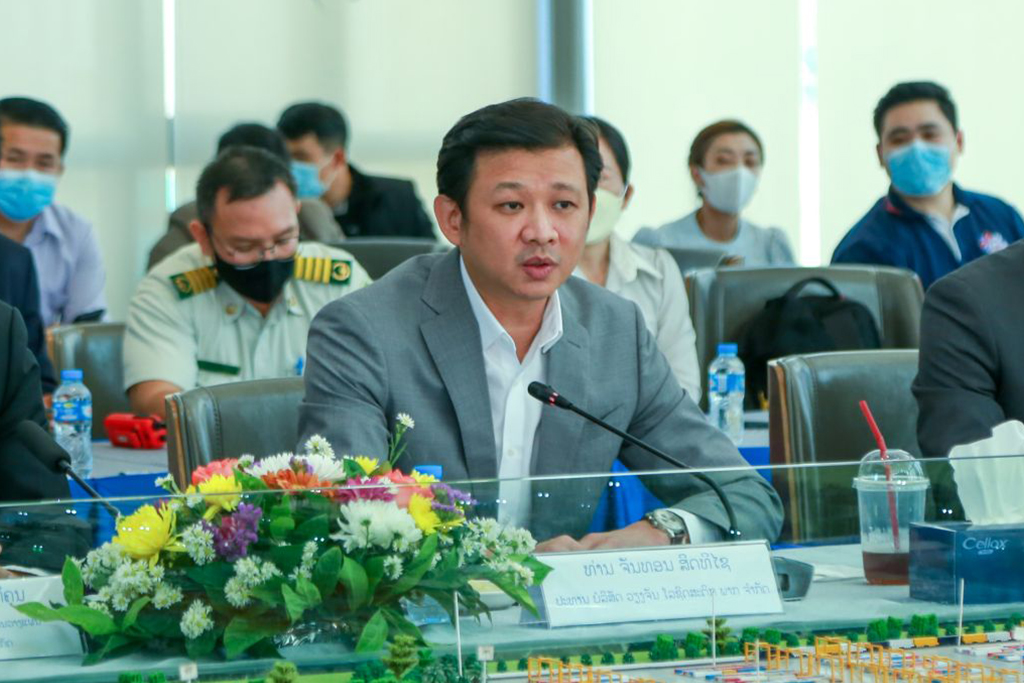
Former PM Thongloun’s administration gave the green light to a local company, PTL Holding Company Limited (PTLH) – the parent company of the Vientiane Logistics Park Co., Ltd. – to join with the Lao and Vietnamese governments in developing the Lao Logistics Link.
The investor took just 11 months to develop the dry port and logistics park, which opened for service on December 4, 2021, just one day after the inauguration of the Laos-China Railway.
The US$727 million dry port and logistics park project, in which the developer has a 70 percent stake and the government 30 percent, will be fully developed over the next few years.
Under the LLL project, the Lao side is set to take management of the Vung Ang seaport in Vietnam’s central Ha Tinh province, which Laos holds 60 percent share, in coming months.
“If things go as planned, we expect to assume management [of the port] in July,” Mr Chanthone told Dr Xaysomphone.
A railway to link the Lao capital, Vientiane, to the seaport is also planned under the LLL to facilitate goods transport.
A feasibility study of the railway on Lao soil was successfully conducted and the findings are scheduled to be presented to the Ministry of Public Works and Transport.
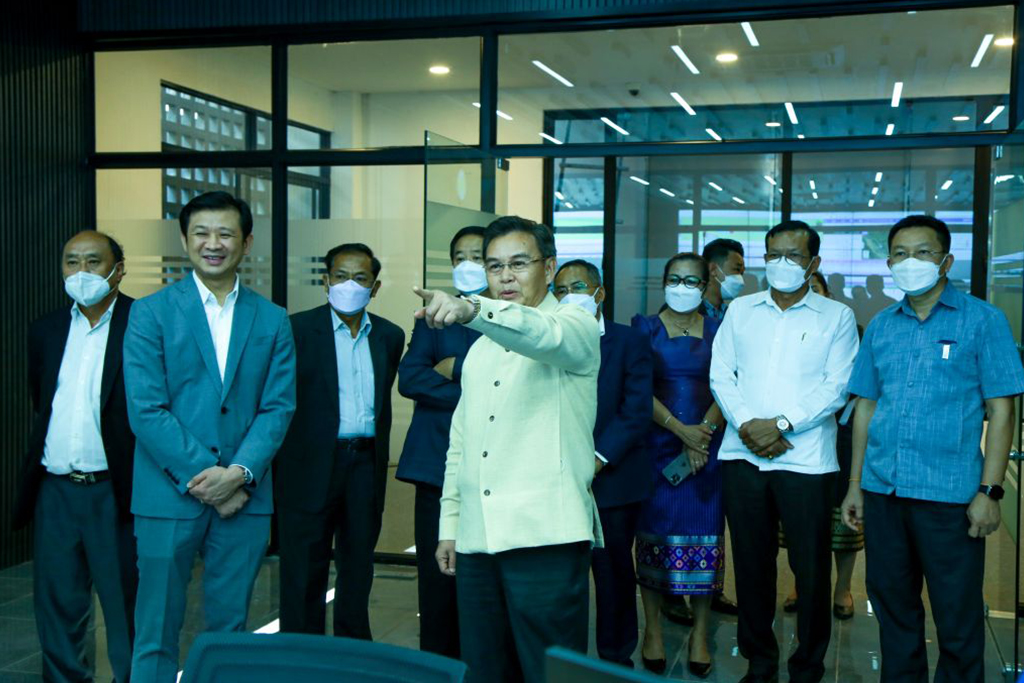
If the plan goes to schedule, the developer hopes to start construction of the section of the railway linking Mahaxay district in Khammuan province to the Laos-Vietnam border by the end of this year.
Meanwhile, a feasibility study is being carried out on the section of the railway in Vietnam. This study is expected to be completed by June and to be submitted to Vietnam’s National Assembly for approval in the middle of this year.
Mr Chanthone said the Vietnamese government has recommended one of Vietnam’s top 10 largest enterprises to partner with the Lao side in bringing the project to fruition. In this regard, the Lao and Vietnamese enterprises are expected to sign a joint venture deal by the end of this month during a planned visit to Laos by Vietnam’s Minister of Planning and Investment.
Included in the Lao Logistics Link, a planned 2,000MW coal-fired power plant and a logistics park in Khammuan province will support the profitability of the seaport and railway projects, he added.
It will be necessary to import as much as 6 million tonnes of coal to feed the plant and generate power.
“If we purchase the seaport (shares in the seaport), we must have a certain amount of goods to transport, otherwise we will make a loss,” Mr Chanthone recalled his response to former PM Thongloun.
The import of coal plus the export of minerals and farm products, which is estimated to be about 10 million tonnes combined, will make investment in the seaport and railway profitable, he told Dr Xaysomphone.
The chairman said the LLL-packaged projects support one another and will be a game changer given that the LLL will eventually lead to Laos becoming a new global supply chain because of the shorter transport route and lower costs.
Freight transport through the dry port and the Laos-China Railway and onwards to the interconnected rail network could reach European markets within two weeks, much shorter than by sea, which takes about 45 days.
Located next to the Laos-Thailand railway station and the Laos-Thailand Mekong Friendship Bridge 1, the dry port is expected to reduce cross-border transport costs, especially at the bridge border crossing, by 40 percent from current prices by 2025. Meanwhile, freight transport via Laos and the Vung Ang Seaport would reach markets in the Pacific region.
A study conducted by an internationally-recognised company suggested that in the next five years the number of containers in transit will reach 5 millions units. With that, various fees will generate US$1.5 billion in direct revenue for Laos, whose overall revenue in 2021 stood at more than US$2.3 billion.
“I believe logistics will be a core driver of the national economy,” said Mr Chanthone, who has engaged in trade, industrial and transport businesses for decades
As a member of Prime Minister Phankham Viphavanh’s advisory board, Mr Chanthone has recommended that the government prioritises logistics as a top national agenda, to which greater attention is paid so that the necessary legislation is promptly formulated and adjusted to support logistics services.
TDP Managing Director Sakhone Philangam underlined the need to strictly enforce laws and regulations concerning cross-border transport, saying that transport trucks with foreign number plates continue to pass through cities in Laos in ways that violate the regulations.
Given that the Thanaleng Dry Port is an international border checkpoint for freight, imported goods should be unloaded at the dry port before being distributed by Lao trucks.
Dr Xaysomphone said the National Assembly would offer legislative support for the LLL project in line with parliament’s capacity to do so.
He acknowledged that allowing foreign trucks to pass through inner areas of Laos was in violation of the regulations, saying that other countries have banned foreign trucks from driving through inner city areas.
